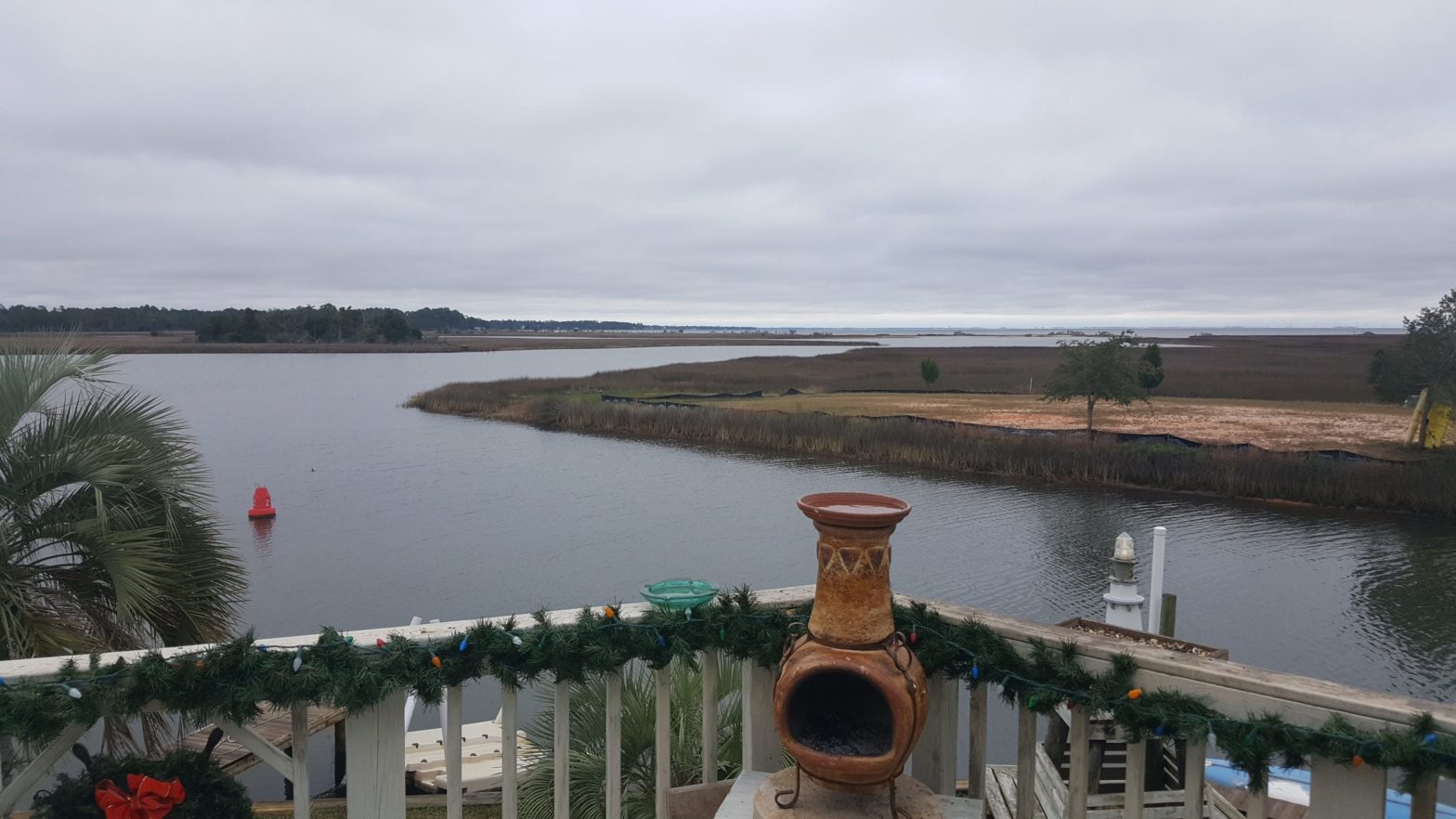![The water in Indian Bayou hasn't looked red from the red-clay pollution lately, according to Monterey Shores residents; however, there hasn't been significant rain since early fall. [ALICIA ADAMS | Press Gazette]](http://127.0.0.1/wordpress/wp-content/uploads/2022/01/ghows-DA-617d25c0-66cc-4a53-e053-0100007fd9b8-717aae38-scaled.jpeg)
MILTON — Almost two years after reporting red-clay pollution in Indian Bayou, residents of Monterey Shores have observed some changes to the health of the bayou after the Florida Department of Health, Florida Department of Transportation, Northwest Florida Water Management District and Santa Rosa County stepped in.
The residents, whose homes are situated on Indian Bayou, noticed the red-clay pollution in March 2016. A body of water once full of mullet, pelicans and other various forms of wildlife is now nearly empty, according to Diane and Gary Nelms, who have owned their Monterey Shores home for 10 years.
The couple reported the pollution to the county and other governmental organizations, but no organization was found solely responsible. But they didn’t give up.
SEARCHING FOR A SOLUTION
In August 2017, the Water Management District informed the Santa Rosa County and FDOT that they both were in violation of state statutes to control erosion, turbidity and sedimentation and required them to come up with a plan to clean the bayou.
The Water Management District decided that the red-clay runoff originated from two locations: the Interstate 10 expansion project near Avalon Boulevard and unpaved roads near the bayou — namely San Juan Road — owned by the county.
Water Management dedicated $10,000 to the county to begin temporary improvements to prevent further pollution. The county has since ceased maintenance of red-clay roads around the bayou for the time being.
After months of persistence from the residents and local marine biologist Barbara Albrecht, the governmental entities agreed to meet in October to find a solution to the red clay infiltration that has affected the bayou, which feeds into the Escambia Bay.
The Oct. 17 meeting — chaired by County Commissioner Sam Parker — featured representatives from each agency involved and Will Dunaway, a Pensacola environmental lawyer who took the case pro-bono. A solution wasn’t determined at the meeting, but the representatives agreed to work together to find the best remedy.
FDEP LEADS THE WAY
The entities met again in early December and decided that FDEP would oversee the red-clay pollution issue. According to Brandy Smith, the external affairs manager for the Northwest District of FDEP, the effect of centralization on the bayou "will provide for a more effective and efficient regulatory process and ultimately a quicker resolution."
The FDEP is better equipped to take on a lead role because it has regulatory authority over a storm-water program during construction activities and the Water Management District does not, according to Smith.
According to the residents, they were not told about the meeting until days later. FDEP is anticipated to meet again with Santa Rosa County and FDOT officials in the upcoming weeks to agree on the next steps.
'WE LIVE HERE AND WE SEE THE WATER'
Residents of Monterey Shores said the water in Indian Bayou appears to be healthy; however, there hasn’t been a significant rain event in a few months and it’s difficult to tell if the problem is still there.
"We don’t know if this is good or bad; it sounds good," Gary Nelms said.
"To me, it sounds just like a bureaucratic paper shuffle and I don’t see anything happening," resident Richard Bone said.
Nelms said he has noticed hay bales and rocks put in nearby ditches, presumably to slow the runoff. There are also large filtration devices near the Interstate 10 eastbound off-ramp on Avalon Boulevard.
"We’re skeptical, because we live here and we see the water," Nelms said. "We know that it hasn’t rained … in quite a while, so there hasn’t been runoff from anything. The water does appear clear … the water has a different color that it’s never had; it’s had a… milky look to it that we have never seen."
The residents said some animals still lived in the bayou even when it was full of red clay. They wonder what has been added to the water to disperse the red clay, because since they’ve noticed the milky color, there have been less fish and birds.
TRACKING THE LATEST PROGRESS
FDEP recently came into the bayou on boats and took several core samples of the water and sediment, according to Nelms. He said they emailed residents a report of their findings about a week later.
According to the report, FDEP found no red clay in their samples, although Nelms said one can see the sand bars in the bayou that comprise red clay.
Judy Walker, another Monterey Shores resident, said students from the University of Florida Milton campus came to the bayou and took samples in late October. Walker said she observed the students for awhile, and she could clearly see red clay.
According to Walker, she has seen some signs of new health in the bayou: more grass on the seawalls, more crabs, stingrays and some bigger fish; however, she has not heard the mullet jumping like they used to and the oysters are all gone.
Nelms said there is still an element of distrust between residents and the governmental bodies in charge of fixing this issue that has affected their neighborhood and way of life, and they are afraid the organizations will keep pushing the problem off until the residents lose interest.




This article originally appeared on Santa Rosa Press Gazette: Residents question Indian Bayou's health
